
© Christina Simons
Bentiu, South Sudan, August 21, 2022.
Bentiu is unique in that anywhere where there is dry land it is only due to humanitarian built dykes. The flooded landscape of Bentiu IDP camp can be viewed from above.
According to Joshua Kanyara, IOM Emergency Coordinator, dry land in Bentiu owes its existence to humanitarian-built dykes and roads. In August 2022, flooding spanned 80km and the dykes, constructed by aid organisations, are approximately 2.5 metres high and up to 5 metres wide. The IDP camp in Bentiu houses over 112,000 people displaced due to flooding or conflict.
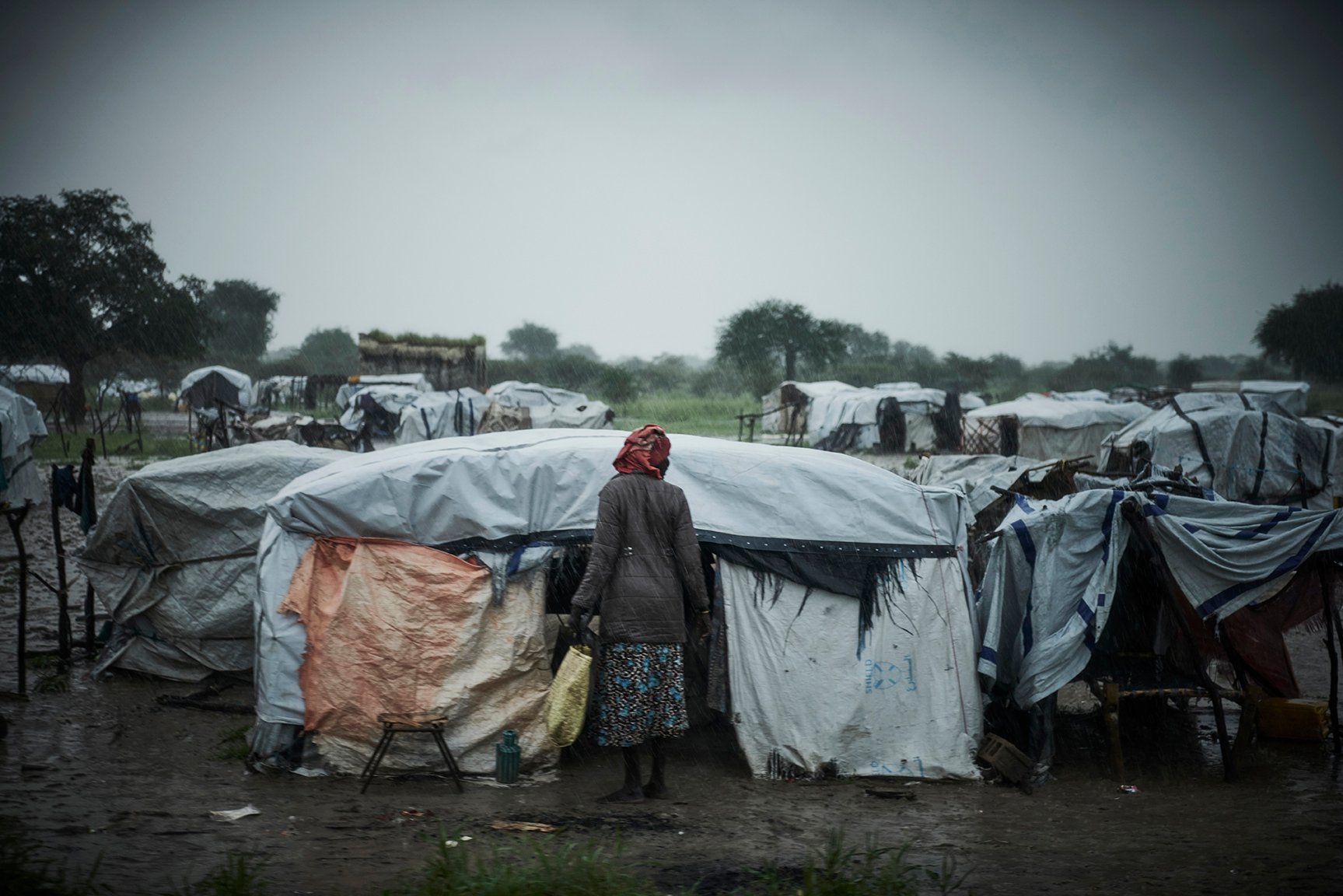
© Christina Simons
Abiye, South Sudan, August 26, 2022.
A woman enters her makeshift shelter in the IDP camp in Abyei after walking home in the evening rainstorm.
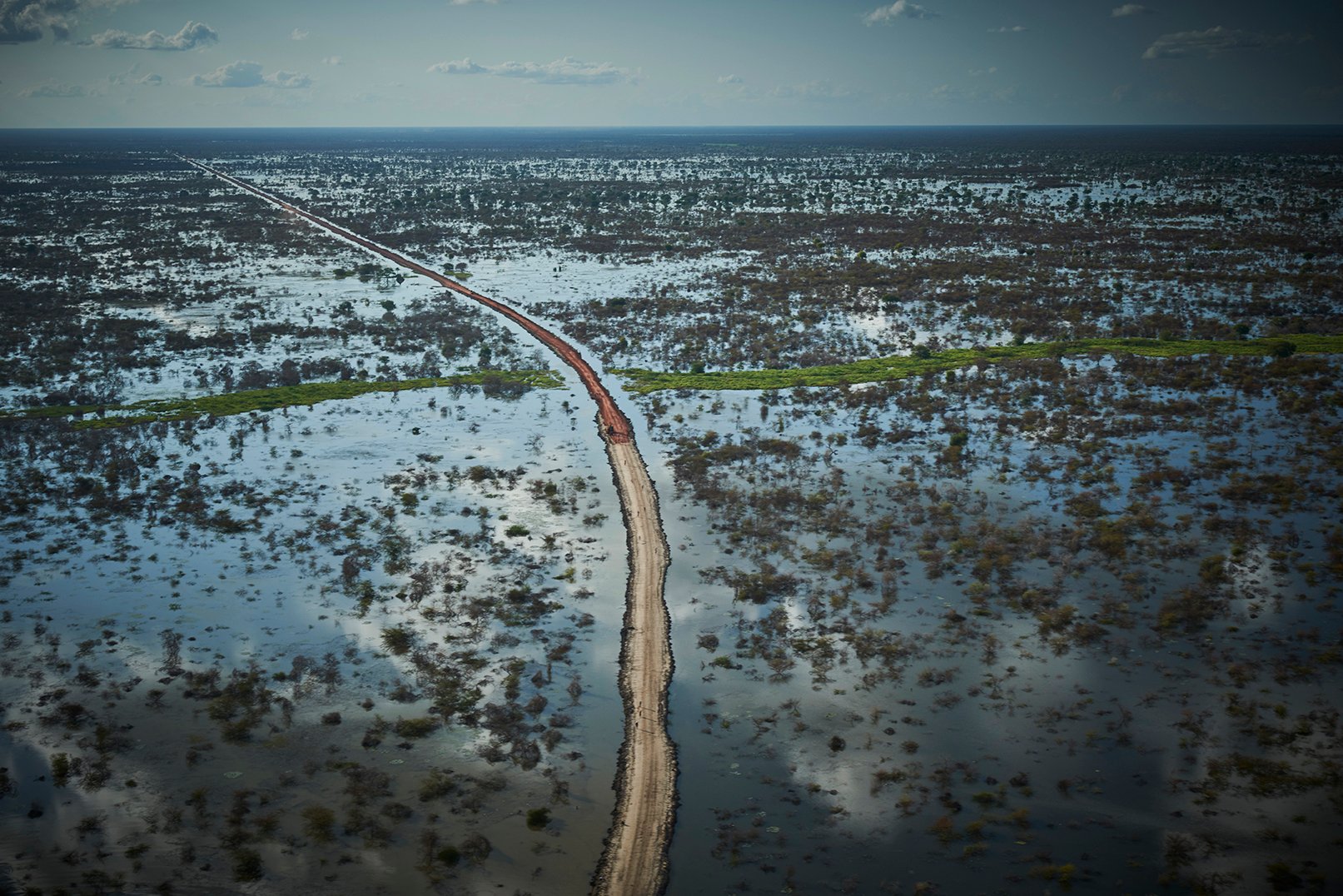
© Christina Simons
Bentiu, South Sudan, August 21, 2022.
The flooded landscape of Bentiu can be viewed from above.
According to Joshua Kanyara, IOM Emergency Coordinator, dry land in Bentiu owes its existence to humanitarian-built dykes and roads. In August 2022, flooding spanned 80km and the dykes, constructed by aid organisations, are approximately 2.5 metres high and up to 5 metres wide. The IDP camp in Bentiu houses over 112,000 people displaced due to flooding or conflict. This photo was taken out of the window of a UN operated Russian MI-8 MTV-1 Helicopter. This is not a drone aerial photo.
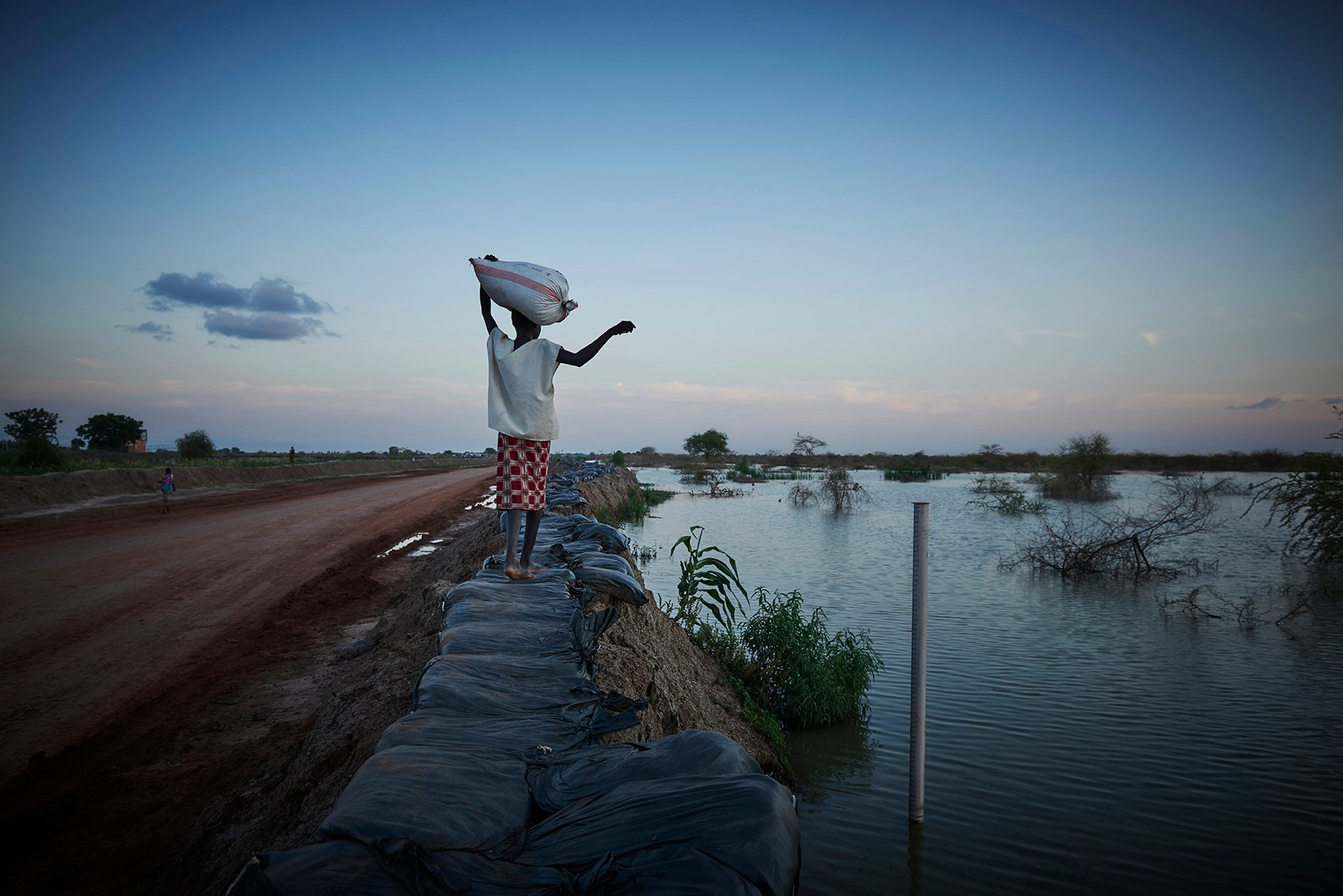
© Christina Simons
Bentiu, South Sudan, August 21, 2022.
A young girl walks along the apex of a dyke separating the flooding from the roads.The roads are often too muddy to walk on so people most often walk along the apex of the dykes.
Bentiu is unique in that anywhere where there is dry land it is only due to humanitarian-built dykes; explained Joshua Kanyara, IOM Emergency Coordinator. The floods span 80km, and the dykes are approximately 2.5 metres high and up to 5 metres wide. The IDP camp in Bentiu shelters 112,000+ people all displaced due to flooding and / or violence in their villages.
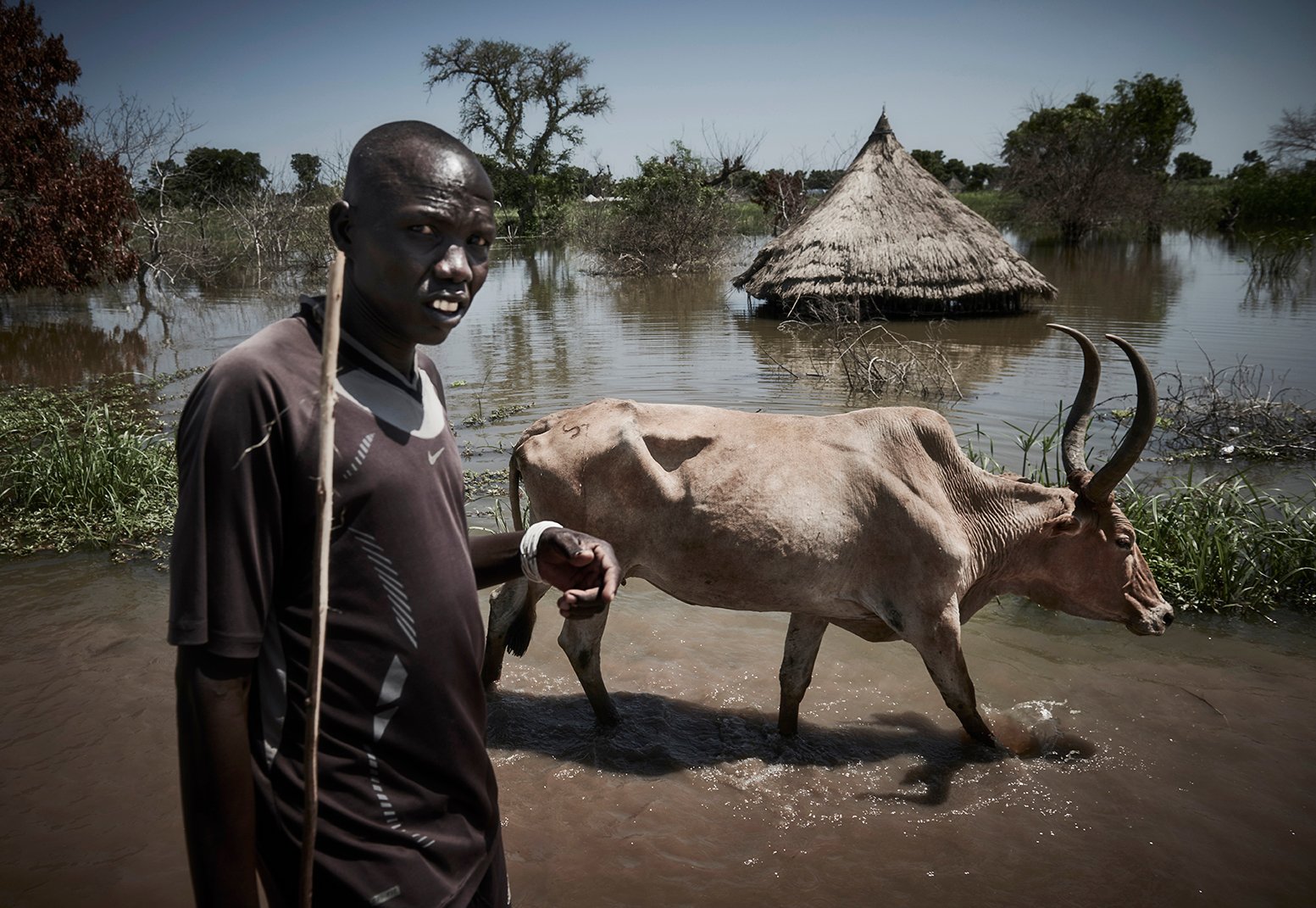
© Christina Simons
Bentiu, South Sudan, August 21, 2022.
A cattle herder walks with his emaciated cattle along the main road of Bentiu town, which cuts through flood waters on either side of the road. Flooded homes have been abandoned all along the roadside.
According to Joshua Kanyara, IOM Emergency Coordinator, dry land in Bentiu owes its existence to humanitarian-built dykes and roads. In August 2022, flooding spanned 80km and the dykes, constructed by aid organisations, are approximately 2.5 metres high and up to 5 metres wide. The IDP camp in Bentiu houses over 112,000 people displaced due to flooding or conflict.
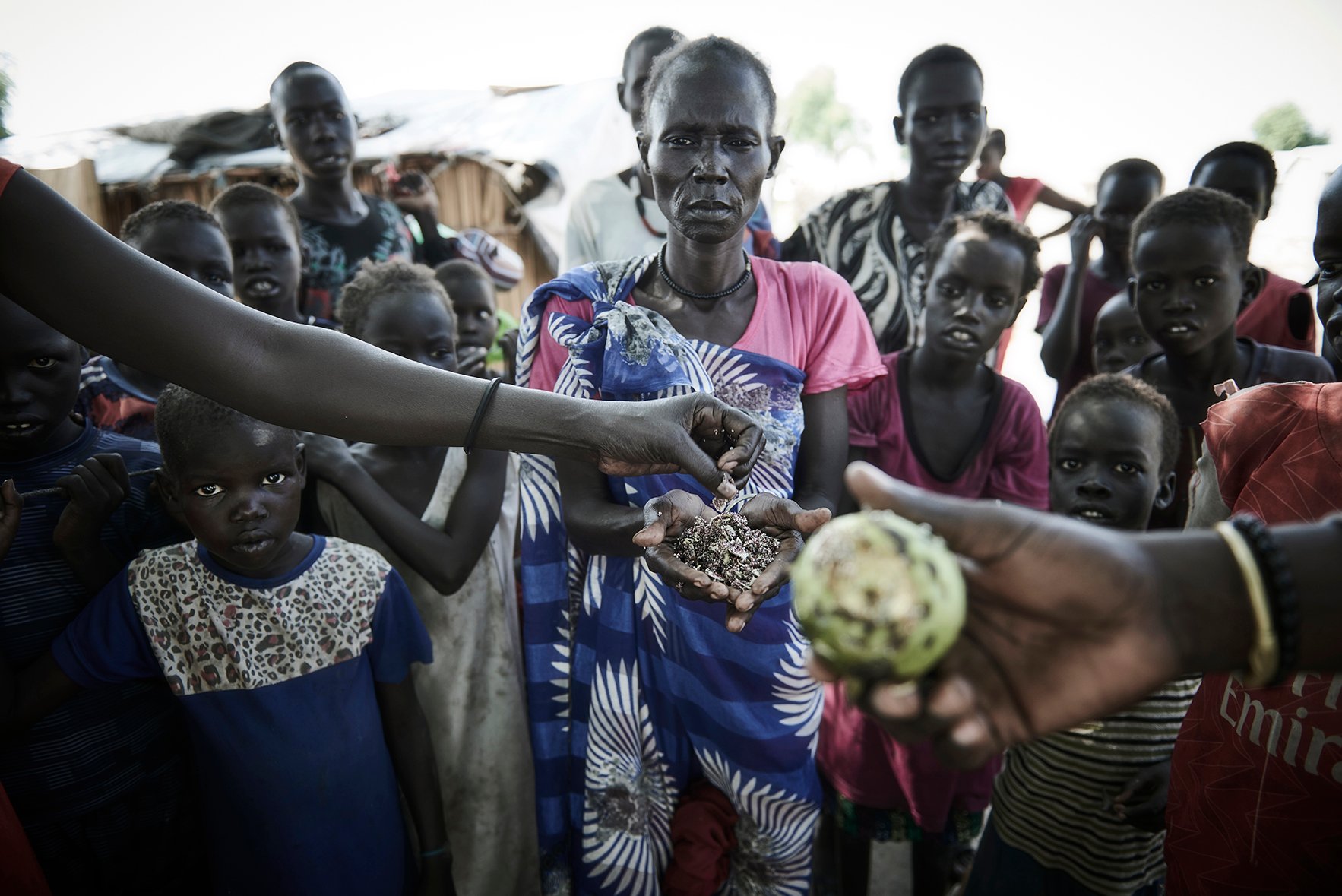
© Christina Simons
Bentiu, South Sudan, August 21, 2022.
Mary Nyantey is 40 years old. When her village flooded and she was forced to flee, she could not carry her children through the floodwaters. Instead, she tied her children inside a sack made from a large plastic tarp (previously used to cover her home) and swam them to safety, dragging the floating sack of children behind her. While now safe from the floodwaters, she and her family have no regular access to food and are forced to collect a plant called ‘Yell’ from a nearby river to eat.
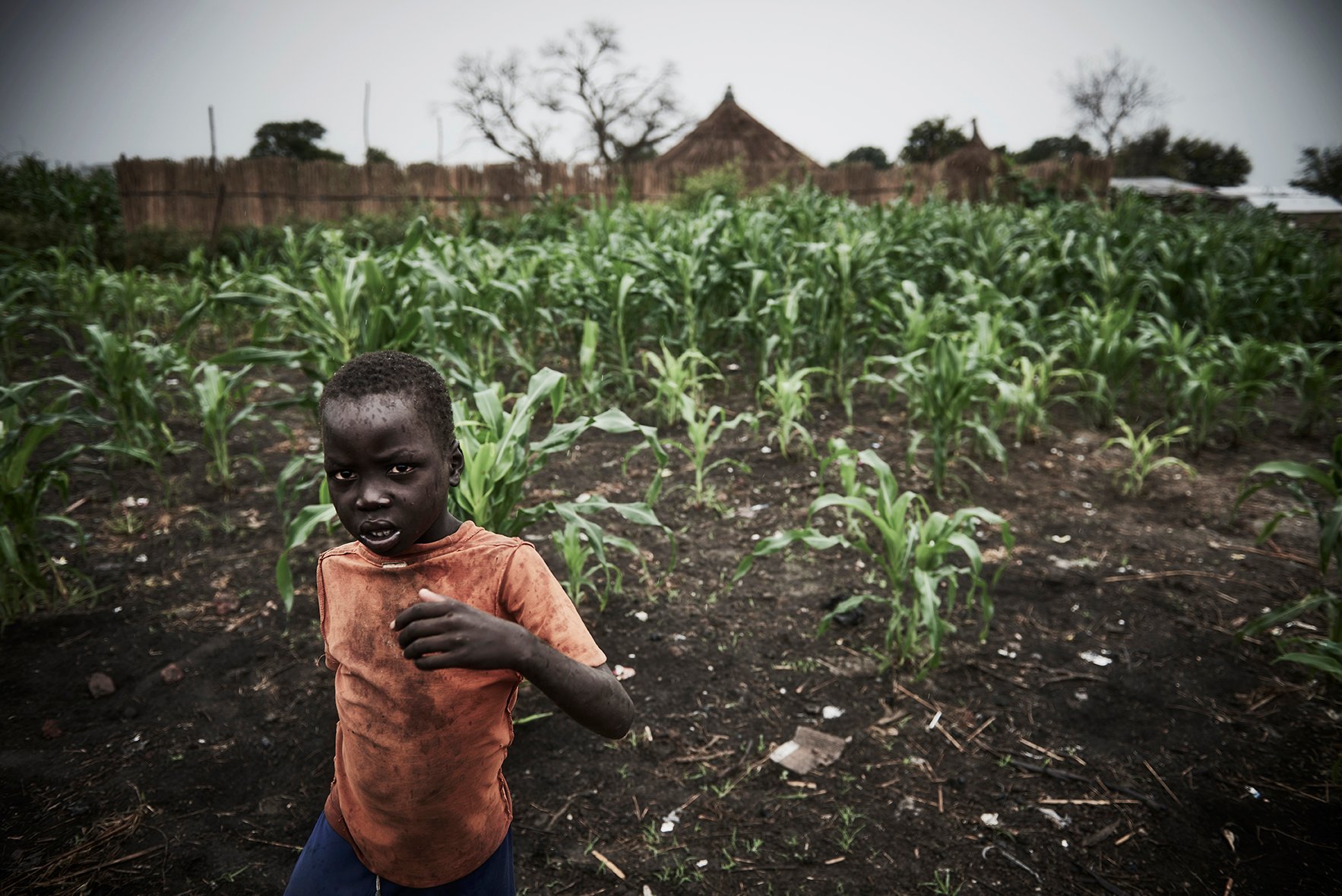
© Christina Simons
Canal Village, Malakal, Upper Niles State, South Sudan, August 11, 2022.
A young boy plays in the field of crops that grow on the land of Canal Village, which UNMAS recently de-minded.
“Early this year, UNMAS responded to community requests from a remote village in Canal where IDPs had resettled on a known minefield. In March 2022, following on from several Explosive Ordnance Risk Education (EORE) sessions delivered by UNMAS, Chief of Mine Action, Mr Fran O’Grady, visited Canal to assess how clearance activities could be undertaken in what was a race against time to get mechanical demining machinery on a barge to the site before the onset of the wet season. Thankfully, this was achieved through solid team effort that resulted in the disposal of more than 25 anti-personnel mines and the clearance of over 17,000 sqm of land, making it safe for the estimated 1,500 people to settle and undertake agricultural activities, as well as for safe access for humanitarian response.” – Fran O’Grady UNMAS (United Nations Mine Action Service).
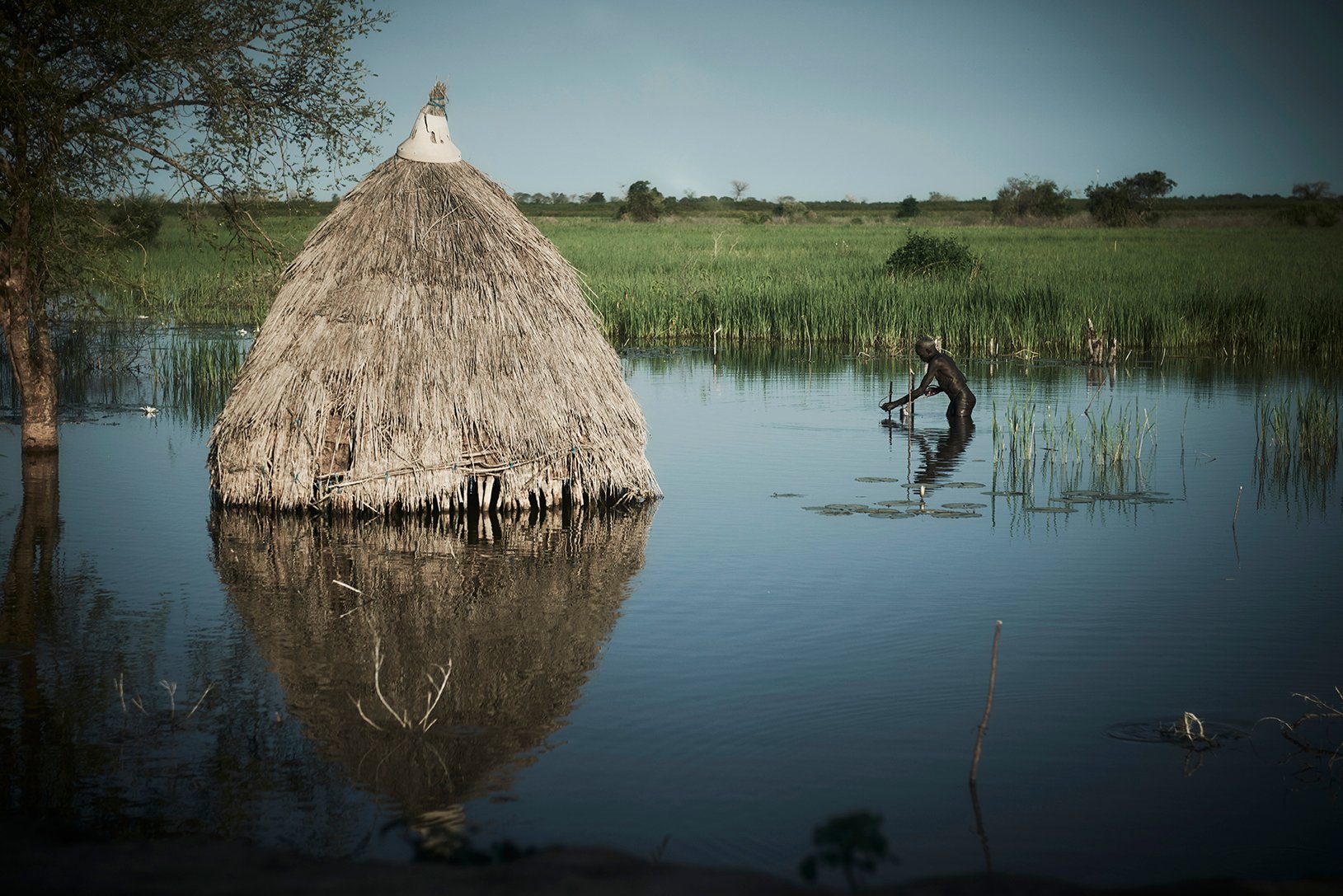
© Christina Simons
Bentiu, South Sudan, August 21, 2022.
A man wades with a net to catch fish around Bentiu’s floodwaters. Homes have been flooded in Bentiu for over four years and are predicted to drain slowly over the next six years. According to Joshua Kanyara, IOM Emergency Coordinator, dry land in Bentiu owes its existence to humanitarian-built dykes and roads. In August 2022, flooding spanned 80km and the dykes, constructed by aid organisations, are approximately 2.5 metres high and up to 5 metres wide. The IDP camp in Bentiu houses over 112,000 people displaced due to flooding or conflict.

Christina Simons
Icelandic-American Christina Simons is an acclaimed international documentary photographer with over 25 years of experience in the visual arts. Her work has been showcased in various countries, including the US, UK, UAE, Europe, Russia, and Mexico. Based in Australia, Christina’s photography has been featured in prominent publications like The New York Times, BBC Online, Newsweek, and The Guardian UK. She has collaborated with humanitarian organisations such as Medicines Sans Frontiers, the UN, Marie Stopes, and UNICEF. Simons’ passion for social justice and compulsion to observe has resulted in the creation of striking bodies of work that offer unique visual commentary upon important social, environmental and cultural issues.

